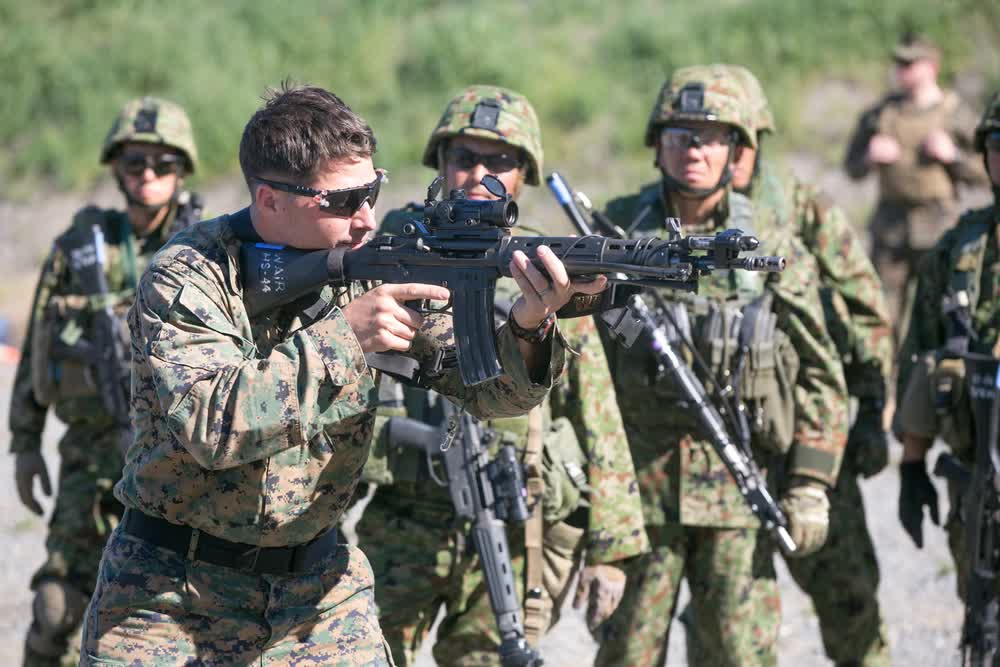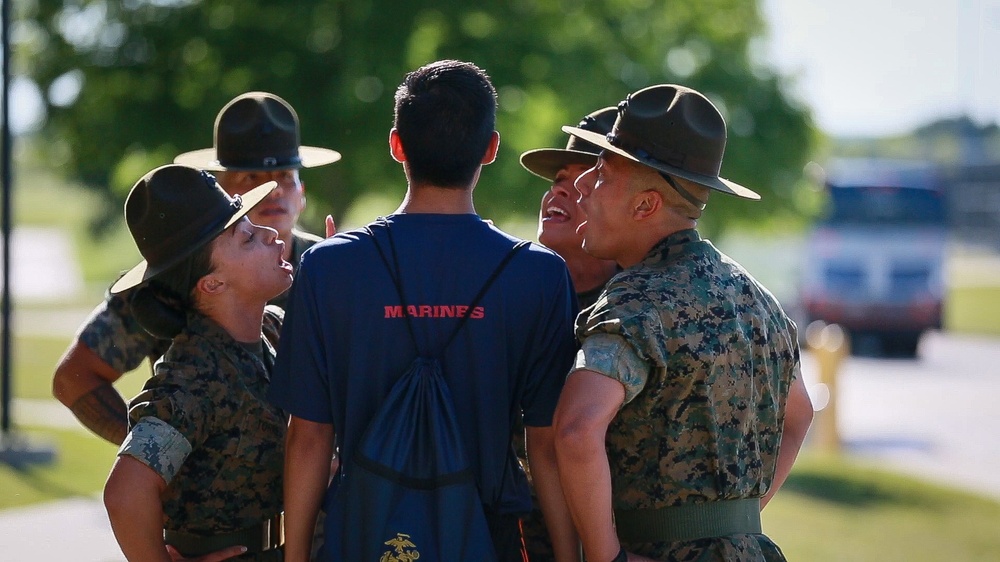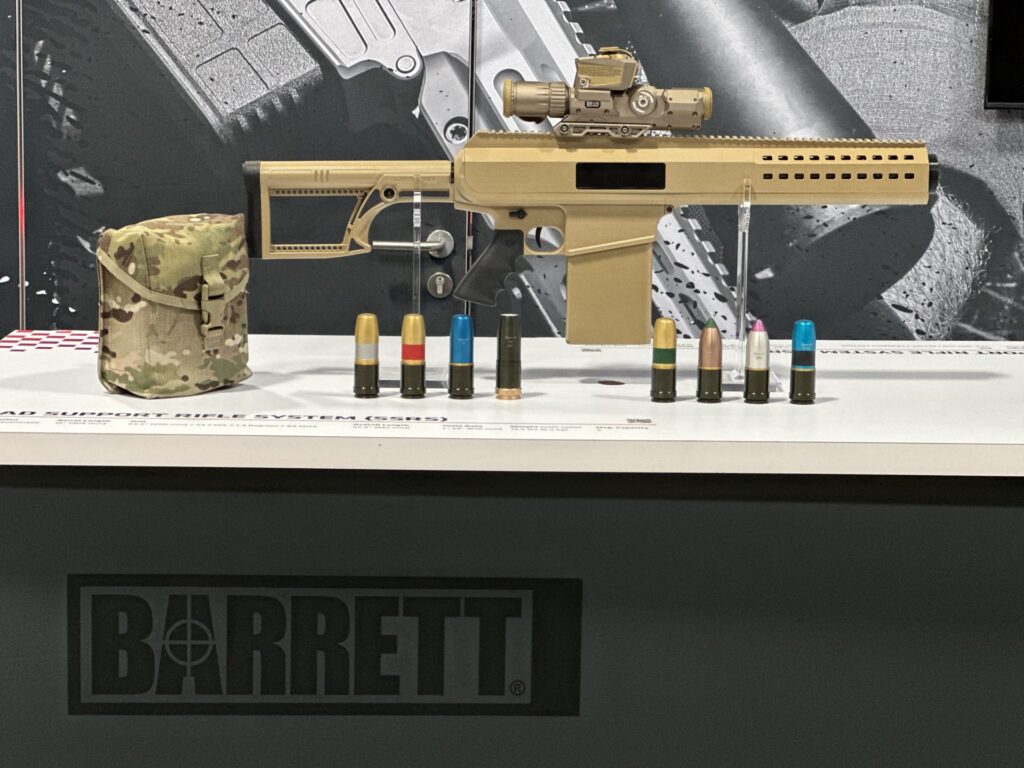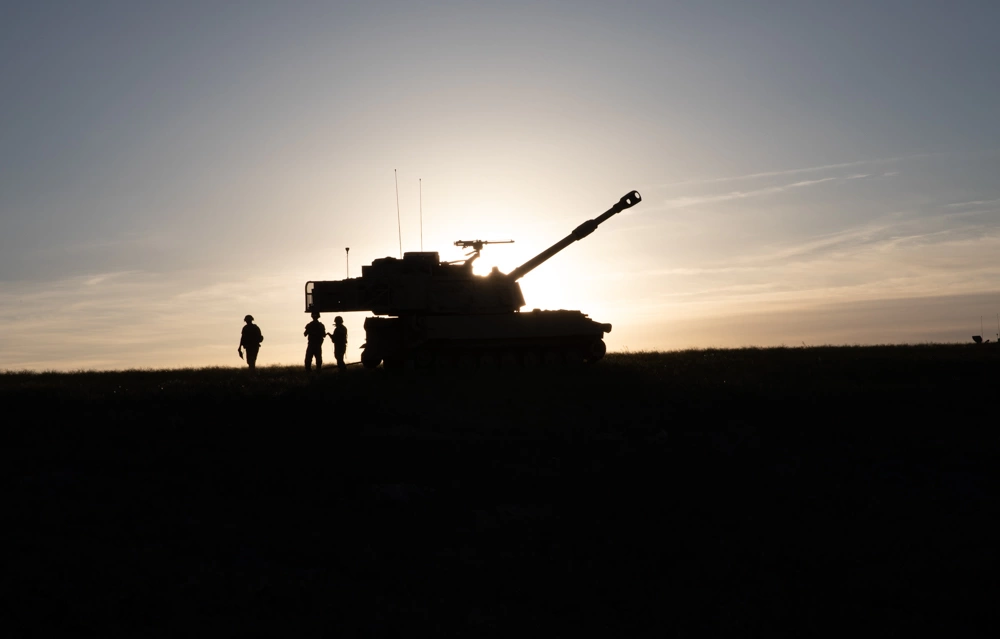Marine Corps new marksmanship plan will make Marines more lethal
- By Travis Pike
Share This Article

In the professional firearms world, it’s well known that individual firearms training within the military is often dated. Rarely can the military adapt and adopt new techniques and tactics quickly and teach an entire branch of service effectively. However, judging from the Marine Corps Marksmanship Campaign Plan (MCP), it seems like the Corps is getting along with the times.
Arguably, this started a decade ago with the adoption of the Combat Pistol Program, which oriented the pistol qualification toward combat shooting rather than slow-fire marksmanship. This continued with the Annual Rifle Qualification (ARQ), a massive redesign of the Marine Corps’ previous qualification. And now we’ve reached the next step.
The exhaustive 10-pages-long Marksmanship Campaign Plan will help shape the current and future Marine Corps. Two aspects of the plan, in particular, bring the Marine Corps into the modern world of firearms training: the Infantry Marksmanship Assessment (IMA); and the Joint Marksmanship Assessment Package.
Providing data on lethality
The Marine Corps has always preached lethality, however, it has never had an objective way to measure it. The Marksmanship Campaign Plan aims to correct this and gather lethality data. So its architects came up with S.P.E.A.R., which stands for Speed, Precision, Executive Control, Adaptability, and Risk Exposure; Marines will be evaluated in those five attributes.
Marines will perform the Infantry Marksmanship Assessment, and the data gathered from that process will be entered into the Joint Marksmanship Assessment Package.
This will allow commanders to make data-driven decisions and judge the lethality of their Marines. If used correctly, it could tailor training to Marines who may need additional training or identify individual points and trends within their unit, company, platoon, and squad.
Related: The MEU(SOC) pistol armed elite Marines for decades
Time matters

The introduction of shot timers and timed assessments takes the IMA and the MCP to the next level.
The Marine Corps has attached times to portions of marksmanship qualifications before, but these always served as a cut-off point rather than a measurement. For example, you could have seven seconds to shoot a drill. If you take eight, you fail. If you complete it in four seconds you pass, but doing it faster than seven seconds doesn’t matter.
In the professional firearm community shot timers are invaluable and widely used to gauge skill. At the range, there are only two ways to judge skill: accuracy and speed. The more holes and the faster you put them in a target the better shooter you are.
Under the Infantry Marksmanship Assessment, every shot fired will be timed and accuracy will still be graded. This seems simple but will be a massive improvement to the Marines’ ability to judge lethality and thus create better shooters.
Looking into the Infantry Marksmanship Assessment in detail

The Infantry Marksmanship Assessment will have four courses.
Known Distance Traverse
Marines will start by standing behind a barrier, and at the “Go” signal, the shot timer and the evolution will start. Marines will assume a supported position and fire two shots at an eight-inch disk at 100 meters. This replicates an enemy behind cover with little exposure.
Then, they will traverse to a torso-sized piece of steel at two meters and fire two shots. The Marines will then assume a prone position and fire two shots at a torso-sized steel target at 300 meters – the longest distance to target in the IMA.
Marines will shoot this portion a total of three times for 18 rounds.
Short Bay Distance
The Short Bay Distance takes place between 50 and 25 meters. Marines will start facing downrange with their weapon loaded. They will start in the standing position and five rounds at the target. They will then transition to kneeling and fire five rounds.
At this point, they’ll conduct a speed reload either while stationary or on the move. They have to move from the 50- to 25-meter line and fire five more rounds from the standing position.
Shooting on the Move
Next, we have a short Shooting on the Move drill. Marines will move from 15 to three meters while engaging two targets. As they move, they’ll fire two shots to the left target’s chest and then two shots to the right one’s. Then, they’ll execute a moving reload and fire one headshot on each target.
Manipulation and Recoil Control
The final test is all about controlling their weapon and its recoil. Shooters will be seven meters from their target. At the signal, they’ll fire six rounds as fast as possible to the chest. They’ll conduct a speed reload and fire four rounds to the head.
Related: How Marine Raiders benefit from their diverse occupational and cultural backgrounds
Scoring the IMA

The ARQ target has designated scoring zones based on real human lethality zones. The shooters will be scored based on where they hit inside those zones and on their individual times – a very common scoring system in the professional shooting community. The Corps hasn’t determined the scoring classifiers haven’t been determined yet.
Then, the score will be uploaded to the Joint Marksmanship Assessment Package, which will be available for in-depth review by the unit’s commander. This will provide commanders with the data to make training decisions and judge their Marines’ lethality.
The IMA isn’t logistically heavy. It only needs four ARQ targets, three steel targets, a range of at least 300 meters, a barricade and shot timer, and what appears to be a tablet for uploading scores.
This portion of the Marksmanship Campaign Plan seems simple but effective. It’s nice to see the Marine Corps catching up with modern shooting standards. The MCP is a long-term planning process, and it’s only just getting started. I’m excited to see where the Marine Corps takes it.
Feature Image: A U.S. Marine with 1st Reconnaissance Bn., 1st Marine Division, demonstrates correct sight alignment to soldiers with the Japan Ground Self-Defense Force (JGSDF), Western Army Infantry Regiment, while conducting combat marksmanship training during Exercise Iron Fist aboard Camp Pendleton, Calif., Feb. 11, 2016. Sight alignment is crucial to accurately engage long-range targets. (U.S. Marine Corps photo by Cpl. Xzavior T. McNeal)
Read more from Sandboxx News
- Weird incidents with South Korea’s elite Tuk Su Bu Dae unit
- Stolen stealth fighter: Why China’s J-20 has both US and Russian DNA
- Floyd Nichols’ handcrafted WWII knives never achieved wide fame but are now collectible
- Top 3 foreign policy questions for the new Trump administration
- Meet CHAPPIE, the Space Force’s robot that can sniff nuclear material
Related Posts
Sandboxx News Merch
-

‘AirPower’ Classic Hoodie
$46.00 – $48.00 Select options This product has multiple variants. The options may be chosen on the product page -

‘Sandboxx News’ Trucker Cap
$27.00 Select options This product has multiple variants. The options may be chosen on the product page -

‘Kinetic Diplomacy’ Bumper Sticker (Black)
$8.00 Add to cart

Travis Pike
Travis Pike is a former Marine Machine gunner who served with 2nd Bn 2nd Marines for 5 years. He deployed in 2009 to Afghanistan and again in 2011 with the 22nd MEU(SOC) during a record-setting 11 months at sea. He’s trained with the Romanian Army, the Spanish Marines, the Emirate Marines, and the Afghan National Army. He serves as an NRA certified pistol instructor and teaches concealed carry classes.
Related to: Military Affairs

5 ways to prepare and survive the Marine Corps boot camp

Barrett’s Squad Support Rifle System will make infantry squad deadlier

The unique world and uses of howitzers
Sandboxx News
-

‘Sandboxx News’ Trucker Cap
$27.00 Select options This product has multiple variants. The options may be chosen on the product page -

‘AirPower’ Classic Hoodie
$46.00 – $48.00 Select options This product has multiple variants. The options may be chosen on the product page -

‘AirPower’ Golf Rope Hat
$31.00 Select options This product has multiple variants. The options may be chosen on the product page -

‘Sandboxx News’ Dad Hat
$27.00 Select options This product has multiple variants. The options may be chosen on the product page
